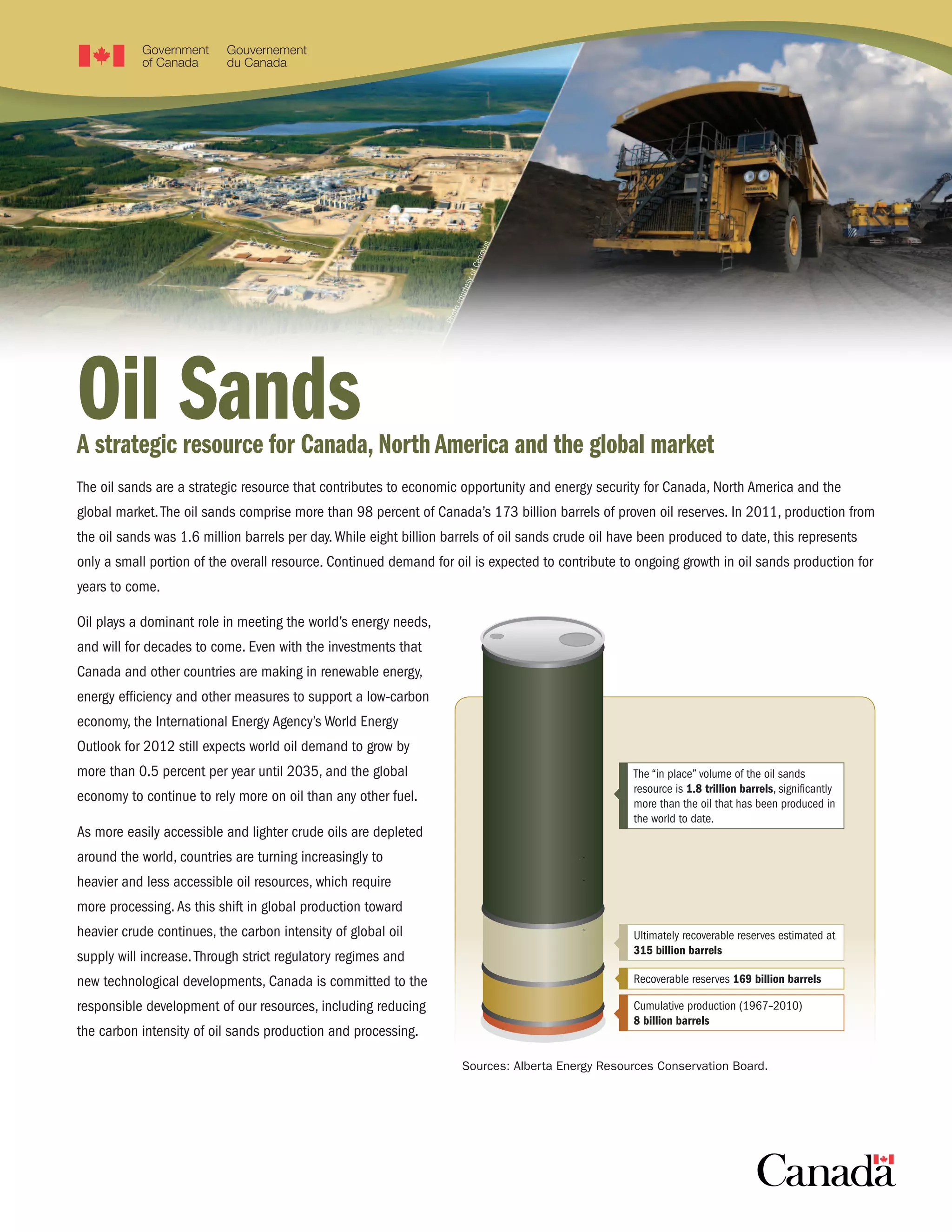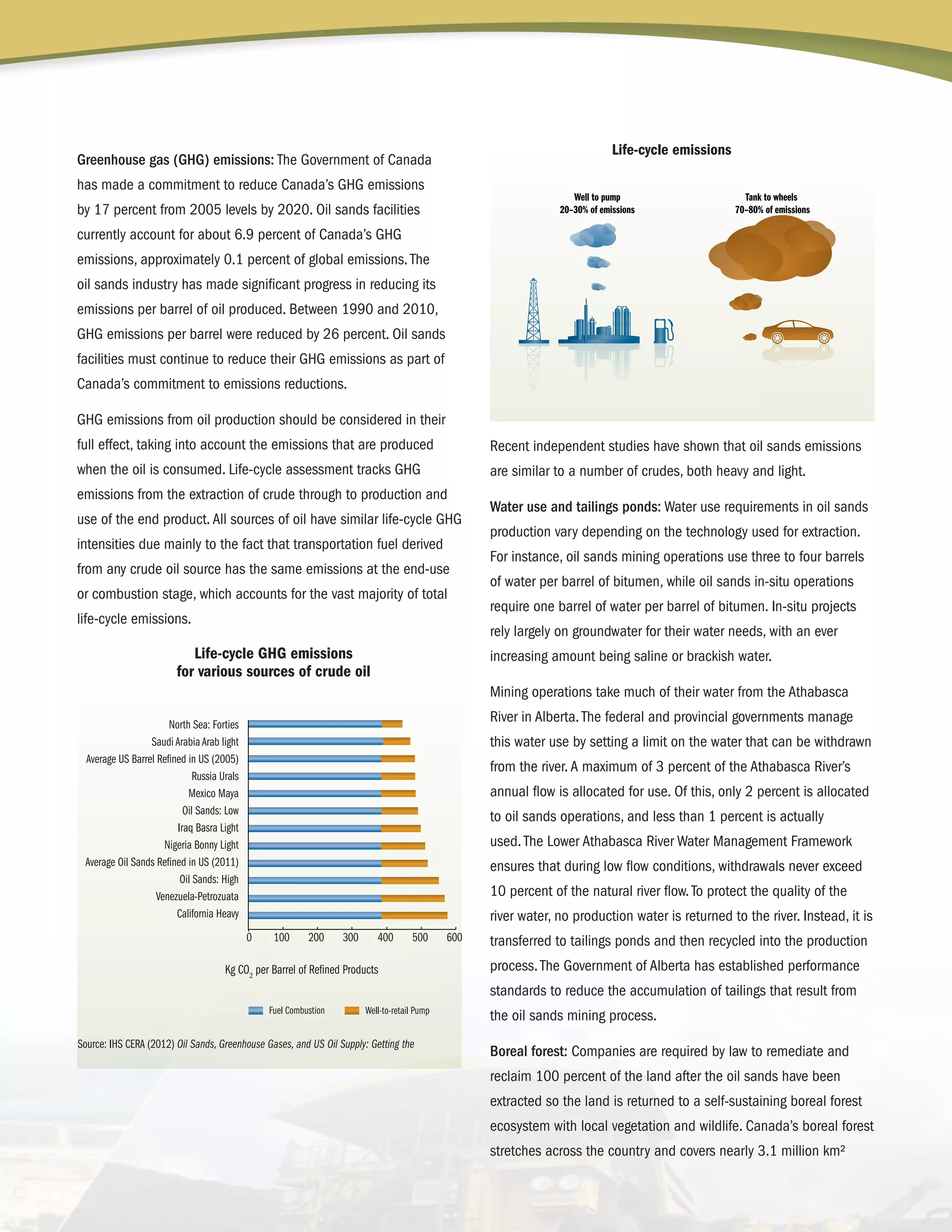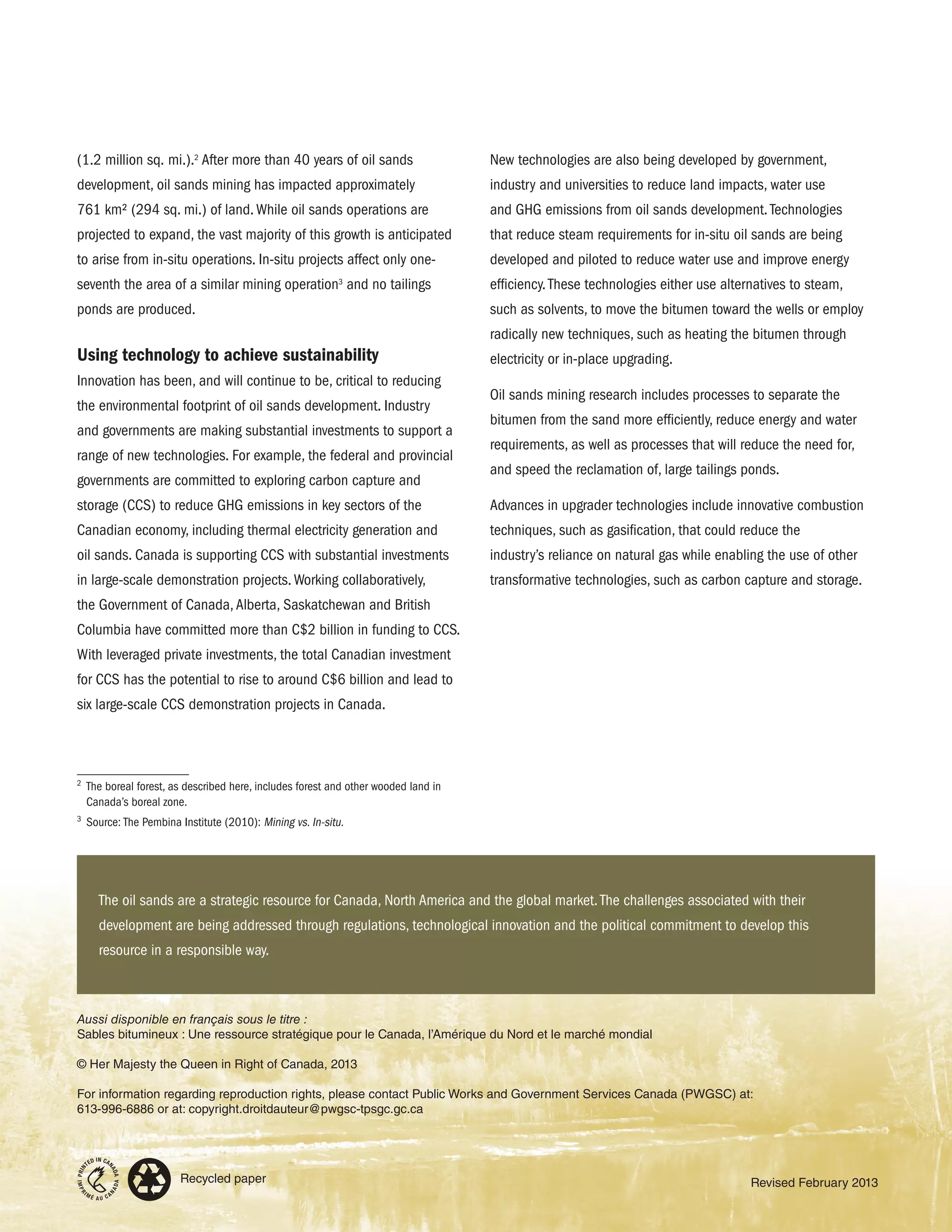The oil sands are Canada's third largest proven reserve of crude oil, located in Alberta and Saskatchewan. They contain over 1.8 trillion barrels of bitumen, which is extracted through mining or drilling processes. While oil sands production was only 1.6 million barrels per day in 2011, it is expected to grow significantly in the coming decades to meet global energy demand. The oil sands industry aims to develop the resource responsibly while minimizing environmental impacts through stringent regulation and new technologies.

![What are the oil sands?
The oil sands are the third largest proven or established deposit of
crude oil in the world, underlying a land mass of 142 200 square
kilometres (km2) (54 900 square miles [sq. mi.]).The oil sands
are found in Western Canada, beneath sections of boreal forest,
prairies and muskeg.The oil sands consist of crude oil suspended
in an ore that is a mixture of sand, clay and water. In the oil sands
region, there are some deposits where the oil’s viscosity levels allow
it to flow without the need for heating or dilution. However, most of
the reserves consist of an extra-heavy crude oil known as bitumen.
Bitumen can be extracted using two methods, depending on how
deep the deposits are below the surface.About 20 percent of the
oil sands resource is within 75 metres (250 ft.) of the surface and
can be accessed through mining.The ore is dug up and mixed with
warm water to separate and recover the bitumen from the sand.
The remaining 80 percent of the oil sands resource is too deep to
mine, and some form of drilling technology is required to extract
the bitumen.
Generally, drilled, or “in-situ”, oil sands production involves pumping
steam underground to separate the bitumen from the sand and
then recovering the bitumen through wells.
Raw bitumen, like other heavy oils, cannot be shipped because it
is too thick for pipeline transportation. Bitumen is either diluted
with lighter hydrocarbons to allow it to flow through pipelines or
upgraded. Upgraders are similar to refineries and specialize in
transforming bitumen into lighter crude oil.
Production and investment
Canada’s oil sands are developed by the private sector, with major
investments from companies based in Canada, the United States,
Europe and Asia.As a result, the economic benefits of oil sands
development reach across Canada and around the globe.According
to the Government of Alberta, C$116 billion were invested in the
oil sands industry between 2000 and 2010. Since 1967, when
commercial oil sands development began, production has grown as
the technology to extract and process the resource has advanced
and allowed commercial operations to become more cost-effective.
Today, the oil sands generate economic benefits across the
country and as of 2011, support 273 000 Canadian jobs.1
Various
projections forecast oil sands crude production will rise to between
3.2 to 3.7 million barrels per day by 2020.This growth is expected
to occur despite declining production from more easily accessible
and lighter crude oil sources.
Governance
The Government of Canada’s policy toward the development
of the oil sands and other natural resources has its basis in
an open market where companies make business decisions
within a regulatory framework designed to protect current and
future Canadian interests. In Canada, the provinces of Alberta
and Saskatchewan have jurisdiction over the development of
oil sands within their provincial boundaries.The Government of
Canada shares responsibility with the provinces for environmental
protection.The Government of Canada is committed to ensuring
that the economic and energy security benefits of the oil sands are
balanced by sound environmental stewardship.
Oil sands development is subject to environmental standards that
are among the most stringent in the world. Major oil sands projects
require substantive environmental assessments before they are
approved. Governments also require extensive environmental
monitoring and reporting throughout the life of each project.
Addressing the environmental impacts
Similar to other existing and emerging energy sources, the
development of the oil sands has impacts on the air, water and
land.
1
Source: Canadian Energy Research Institute (2012): Pacific Access: Part 1 –
Linking Oil Sands Supply to New and Existing Markets.](https://image.slidesharecdn.com/4ca6d443-0e0e-4d70-a4be-a5643bac6703-150223124200-conversion-gate01/75/OS-brochure-eng-2-2048.jpg)

